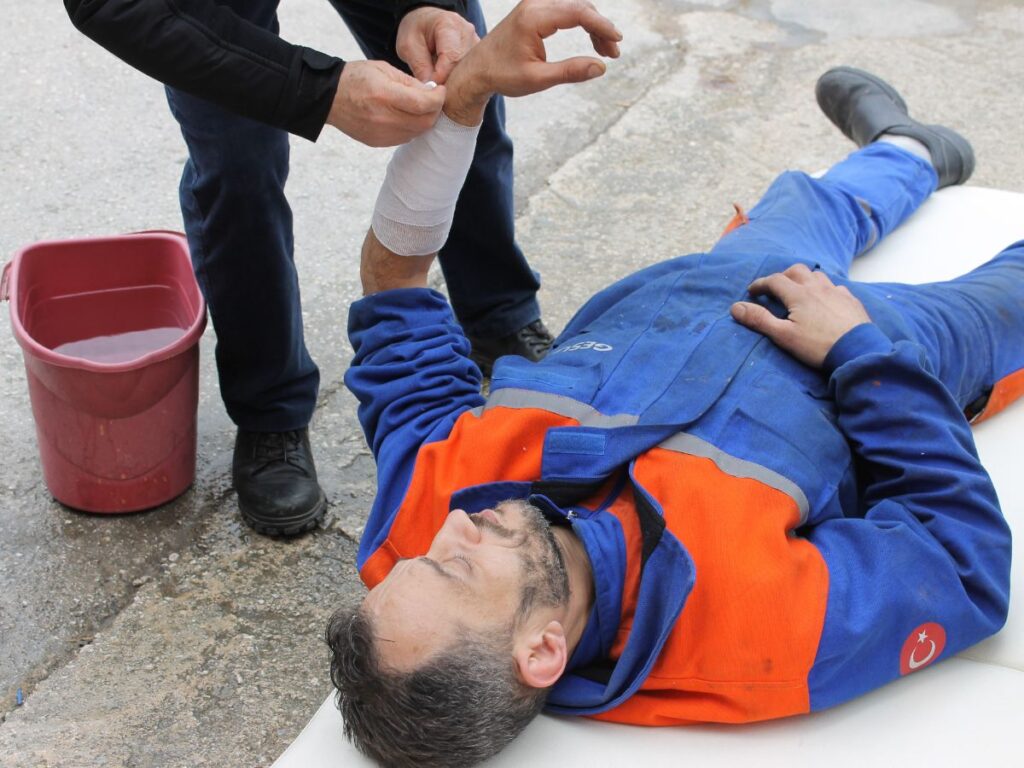Why Neck Stiffness Demands Whiplash Rehab
When the neck endures a rapid back-and-forth jolt—whether from a car collision, fall, or forceful sports impact—tendons and ligaments can overstretch, producing pain and stiffness. Often labeled “just a stiff neck,” whiplash can harbor deeper ligament sprains, muscle guarding, and vertebral misalignments that severely limit rotation. Failing to address these underlying injuries sets the stage for chronic aches or nerve pinch. Through dedicated therapy sessions, stiffness dissolves as inflamed tissues heal in proper alignment. Dr. Elham’s chiropractic perspective ensures no hidden subluxations sabotage the neck’s recovery. This structured approach transitions your neck from rigid immobility to restored fluidity, preventing the “locked up” feeling that makes everyday tasks—from glancing over the shoulder to overhead reach—painful and disheartening.
The Hurdles of Whiplash-Induced Stiffness
Post-whiplash, inflammation grips the neck’s ligaments and disc tissues, prompting protective muscle spasms that clamp motion. Attempting routine head turns or leaning the head back triggers pain. Fear of aggravation can freeze you in a guarded posture, reinforcing tension loops. Over time, scar tissue accumulates around the joint capsules, deepening the stiffness. Therapy methodically releases these obstacles: icing or manual therapy curbs swelling, gentle range-of-motion tasks nudge the joints free, and progressive strengthening stabilizes the newly restored motion. Dr. Elham’s subluxation corrections prevent vertebrae from jamming mid-healing, ensuring the neck reclaims a broad, comfortable arc of movement instead of languishing in partial rotation.
Key Components of Stiff Neck Treatment
Though details vary, typical rehab involves:
- Inflammation Control: Ice packs, gentle massage, or occasional collars to temper acute soreness and let muscles relax.
- Mobilization Exercises: Slow, controlled head rotations, forward/back tilts, or lateral bends that keep joint capsules flexible.
- Posture Adjustments: Eliminating forward-head positions, plus scapular support so upper back muscles don’t chronically pull on the neck.
- Strength and Stability: Isometric neck holds, band-resisted movements, or scapular retraction sets that anchor healthy alignment.
- Functional Restoration: Gradually testing overhead reach, driving neck turns, or mild exercise routines to confirm stiffness is receding without nerve flare-ups.
Layered together, these interventions dissolve whiplash-induced rigidity, letting the cervical spine move fluidly and painlessly in day-to-day life.
Dr. Elham’s Alignment Approach
When whiplash triggers neck stiffness, vertebrae often shift from the sudden force, locking segments that aggravate muscle tension. Dr. Elham identifies these subluxations, applying gentle manipulations to free each stuck joint. If shoulders hunch or the upper thoracic spine is rigid, mild chiropractic or manual therapy can ease strain on the neck. This synergy ensures rehab exercises—like rotation drills or isometric holds—occur in correct alignment, preventing partial relief overshadowed by lurking mechanical issues. Gradually, your neck transitions from locked stiffness to balanced, stable motion, thanks to a blend of manual corrections and progressive PT tasks reinforcing healthy posture and muscle synergy.
Why Seek Whiplash-Stiff Neck Rehab
Completing a structured plan offers numerous rewards:
- Eliminates Persistent Rigidity: Mobilization techniques keep scar tissue from cementing joints in limited arcs.
- Reduces Headaches: Proper alignment curtails nerve compressions that spark tension migraines.
- Prevents Chronic Pain Cycles: Early therapy halts protective muscle loops that re-trigger stiffness whenever you turn the head quickly.
- Full Rotation for Daily Tasks: Freed movement restores comfortable overhead reach or safe driving checks.
- Long-Term Neck Health: Balanced muscles and vertebrae deter degenerative changes or disc bulges from misaligned strain.
Ultimately, thorough rehab banishes the stiff, locked neck that shadows daily tasks and fosters a lasting sense of freedom in head motion.
Maintaining Gains Between Sessions
Dr. Elham or your therapist may assign gentle neck mobility drills—like slow rotations or half-circles—to perform at home. Monitoring posture at desks, especially if you incline your head forward, thwarts tension reaccumulation. Light icing post-workout or after extended screen use can soothe mild neck swelling. If you sense muscle tightness creeping back, a few scapular retractions or chin tucks might reset alignment. These small steps integrate therapy achievements into daily life, letting you preserve the newly restored range instead of slipping back into muscle bracing that stifles movement and reawakens pain signals.
Reintroducing Normal Motions
A stiff neck can hamper overhead tasks—like placing items on a high shelf—or turning quickly to address coworkers. Rehab systematically reintroduces these motions. Once mild rotation or bending exercises prove pain-free, you practice functional tasks—like glancing behind while seated or gently extending the neck to look up. Dr. Elham’s checks ensure no subluxations or scapular dysfunction hamper the neck. Gradually, more vigorous daily or recreational moves, such as mild exercises or overhead sports, become feasible without triggering that “locked” cervical sensation. By reinforcing your newfound flexibility, therapy ensures your neck stands up to normal routines and mild activities minus chronic tension or aches.
Risks of Dismissing Neck Stiffness
Unresolved stiffness following whiplash fosters deeper muscle knots and potential nerve impingements. Over time, incomplete cervical motion can degrade discs or provoke upper back compensations, fueling migraines or shoulder pains. Sleep can suffer if turning the head on a pillow ignites sharp twinges. In advanced scenarios, ongoing limited rotation becomes a normal but restrictive posture, spiking the risk of arthritic changes. By embracing therapy now—through manual mobilizations, posture resets, and strengthening—you avoid these degenerative pathways, ensuring your neck recovers from whiplash’s mechanical jolt with minimal long-term compromise.
Typical Therapy Session Format
Early sessions might focus on reducing soreness—through icing or low-intensity soft-tissue work—and starting mild range-of-motion tasks, like side-to-side pivoting at comfortable angles. Dr. Elham may adjust the cervical spine if subluxations hamper symmetrical rotation. As tightness dissipates, you’d integrate isometric neck holds, scapular retractions, or band-resisted flexion to rebuild muscle synergy. Eventually, therapy includes functional overhead or rotational drills—like simulating daily tasks (e.g., twisting to check behind you)—ensuring no lingering stiffness or nerve twinges persist. Once you demonstrate normal mobility and stable posture, therapy typically wraps up, leaving you with a fluid, pain-free neck that’s well-defended against future whiplash events.
Releasing the Neck from Whiplash’s Grip
Whiplash and neck stiffness treatment ensures the cervical spine doesn’t remain locked in the aftermath of sudden jolts or collisions. By blending inflammation control, carefully structured mobility, strengthening, and Dr. Elham’s alignment checks, the neck’s ligaments and muscles reestablish synergy, shaking off the rigidity that can overshadow daily life. Freed from worry about sharp pains on rotation or overhead tilt, you reclaim normal tasks like driving, overhead lifting, or even mild fitness routines. A thorough, multi-faceted approach rescues your neck from whiplash’s clutches and paves the way for long-term, confident movement—unfettered by the stiff, locked sensation that once plagued every tilt or turn.






